|
|
Post by cabintom on Dec 5, 2013 22:49:43 GMT -8
|
|
|
|
|
|
Post by cabintom on Dec 6, 2013 5:23:38 GMT -8
These were also caught in NE DRC (Bunia). 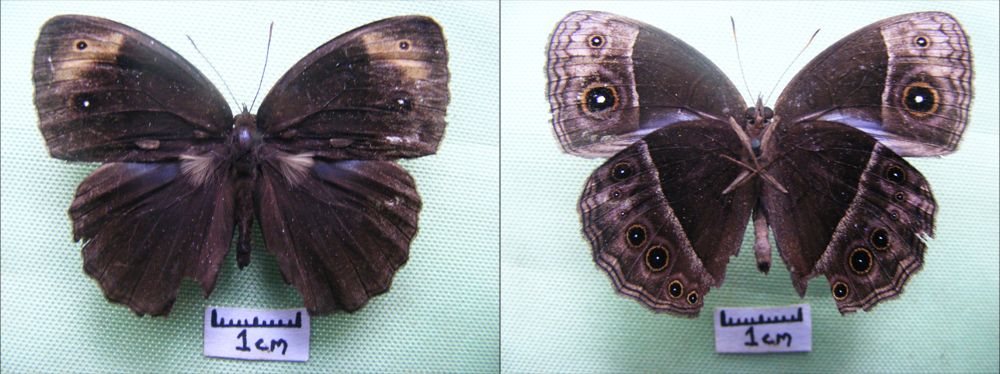 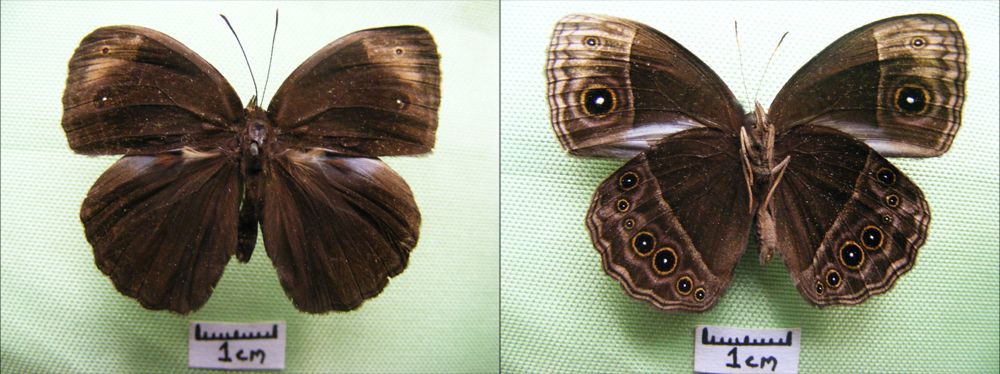 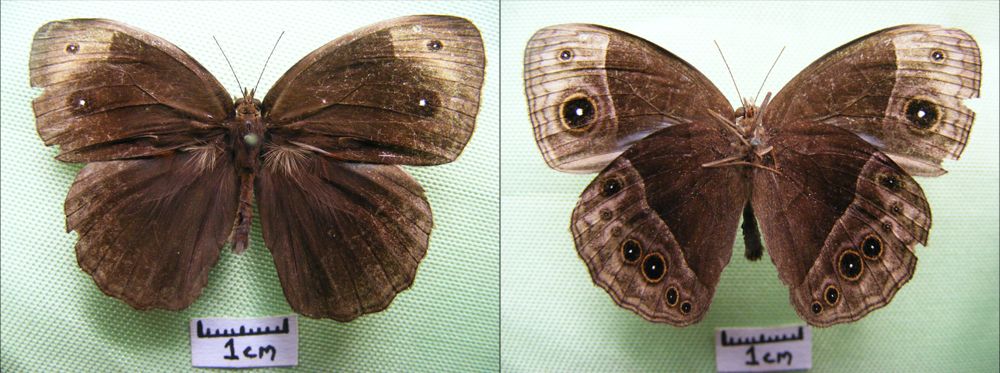  Once again I'm assuming these are all one species... perhaps Bicyclus safitza? But I've seen too many pictures of B. safitza that differ significantly from these to feel confident that that is the correct identification. Tom |
|
|
|
Post by cabintom on Dec 9, 2013 20:25:54 GMT -8
I guess I'm not the only who has a hard time with these.  |
|
|
|
Post by cabintom on Dec 20, 2013 20:23:49 GMT -8
So, I think I'm about 75% positive the first species is Bicyclus vulgaris, and the second seems to be Bicyclus safitza.
|
|
|
|
Post by Adam Cotton on Dec 22, 2013 5:58:31 GMT -8
These look so like the Mycalesis species we have here in Thailand. I wonder if there is a valid reason to treat them as separate genera.
Adam.
|
|
|
|
Post by Adam Cotton on Dec 22, 2013 6:03:50 GMT -8
By the way, the difference between the top set of photos and the lower one could be seasonal, over here the dry season forms of the same species(plural) have much smaller ocelli than the rainy season forms. Whether the specimens with a subapical band are the same species as those without is another question. Here they would be different species.
Adam.
|
|
|
|
|
|
Post by cabintom on Dec 22, 2013 10:52:25 GMT -8
I've been collecting specimens from both sets of photos at the same time, so I'm quite positive they're different species... seasonal forms are going to make identifying these things much more difficult though... that might be why finding consistent reference photos has been so difficult.
Anyways, from what I've read "Mycalesis safitza" and "Mycalesis vulgaris" are synonyms of B. safitza and B. vulgaris, respectively. I'm not sure why they were split into a different genera.
Edit: I was curious... apparently: "Mycalesis differs from Bicyclus by the presence of hairy eyes" (http://www.biomedcentral.com/1471-2148/10/172)
|
|
|
|
Post by cabintom on Dec 22, 2013 11:20:05 GMT -8
Also, today while reviewing the photo records I've been keeping, I think things have become more complicated... I'm now wondering is this 1, 2, or 3 species? I believe the top specimen to be Bicyclus vulgaris... as for the other 2, I'm not certain. I've caught 3 individuals similar to the middle specimen. They all feature the same lighter/yellowish postdiscal "smudge" on dorsal forewings. 2 out of the 3 have an additional, albeit much smaller, subapical ocellus on the ventral forewings (faintly seen on the individual pictured, but not at all found on any of the specimens I believe to be B. vulgaris). Additionally, the ventral colouration seems to be much more "mottled" (I think that's the word I'm looking for) than that of what I assume to be B. vulgaris. I've only captured the one like the last specimen. Not one other has had ocelli on the dorsal side. All 3 were caught within a span of 2 weeks from mid to late November. 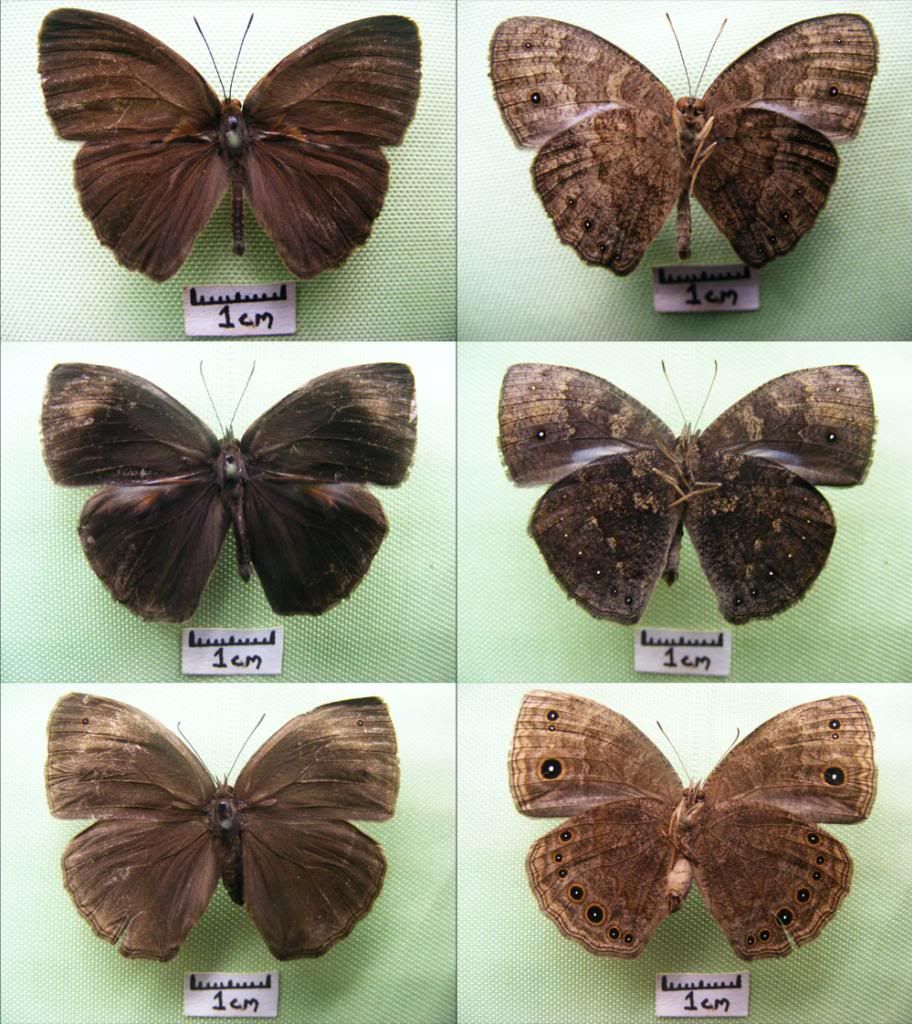 I'm not sure why I'm posting this exactly... since it doesn't seem anyone here is able to help, lol... maybe just looking for a sympathetic ear. Tom |
|
|
|
Post by cabintom on Dec 14, 2014 12:35:55 GMT -8
I'm having a hard time finding reference material with which to compare specimens I'm capturing (NE DRC)... so any help is very appreciated. 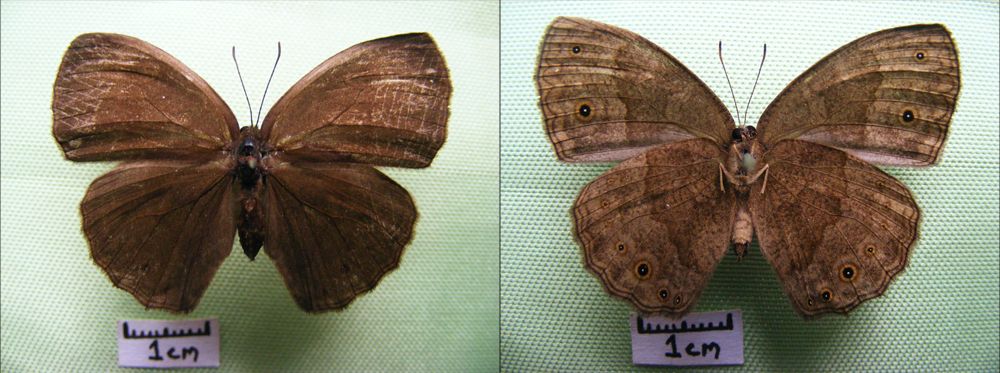 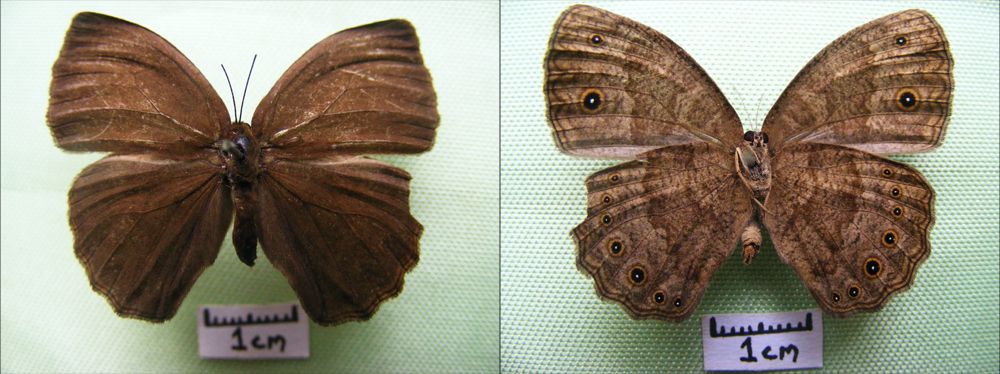 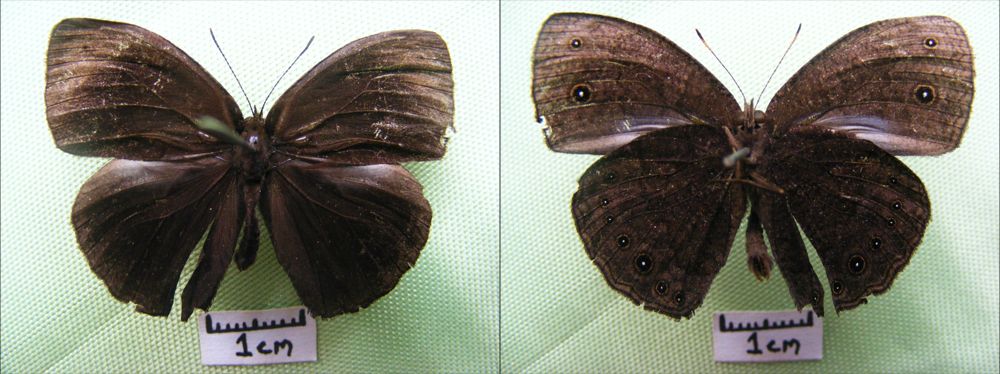 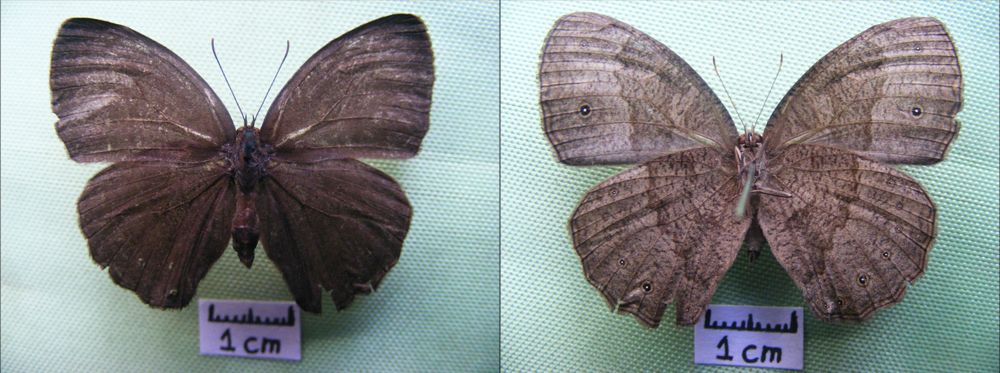 I'm assuming they are all the same species, just with variation in the base shade of brown. 1, 2 & 4 are likely Bicyclus moyses, while the lighter area near the apex of the forewings (dorsal side) leads me to think 3 is Bicyclus vulgaris. |
|
|
|
Post by cabintom on Dec 14, 2014 12:37:43 GMT -8
I believe these are: Bicyclus moyses
Bicyclus vulgaris
Bicyclus sandace
|
|